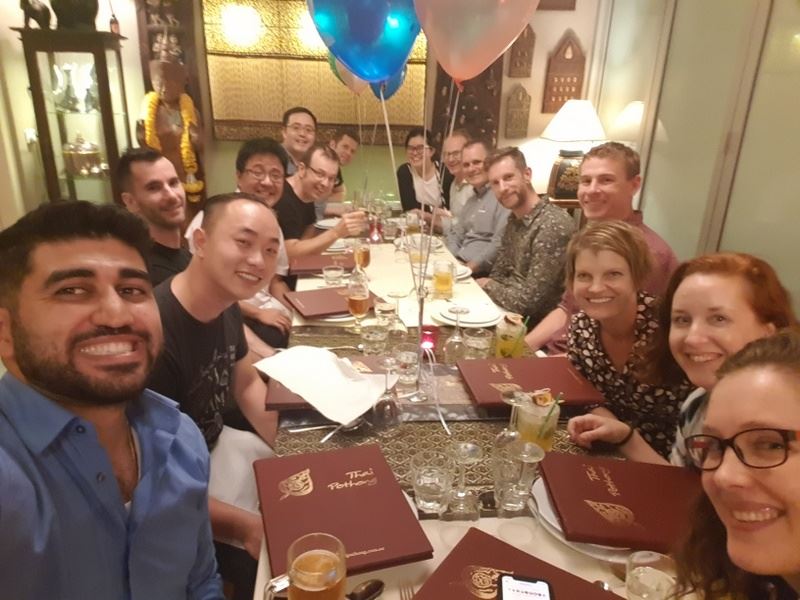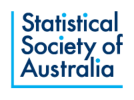 The New South Wales Branch hosted two seminar events in May, with the one that normally would be in April moved to 2nd May so that we could have a public lecture from Hadley Wickham. Thirteen days later we a seminar from Ian Renner in Parramatta.
The New South Wales Branch hosted two seminar events in May, with the one that normally would be in April moved to 2nd May so that we could have a public lecture from Hadley Wickham. Thirteen days later we a seminar from Ian Renner in Parramatta.
Security was tight at a large University of Sydney auditorium for the Wickham lecture since there was a small over-subscription. Council members were employed as bouncers to check tickets and make sure we didn't contravene any fire laws. As it turned out, the auditorium was only about 72% full according to ecologist/ statistician David Warton. With a total capacity of 650 we now had an audience estimate of 468 without having to do any capture or recapture. The demographic was in the youthful direction and t-shirts with slogans such as "CAN {CODE}" were spotted. Hadley Wickham, chief scientist at R Studio, and a U.S.-based New Zealander then delivered a lecture titled "Tidy(er) data". His rules of tidy data were passed on:
1. Each variable is a column.
2. Each observation in a row.
3. Each cell is one value.
We had group exercises with data sets from the Billboard popular music charts and U.S. government agencies, where the speaker asked "What makes your uncomfortable?". Live tidy-ups were done using the tidyr package in R. In summary, it was a very successful and entertaining lecture from the Master of the Tidyverse.
On 15th May the branch caravan rolled out to a different part of Sydney - the Western Sydney University in Parramatta. Ian Renner from the University of Newcastle, New South Wales, was our speaker. Ian spoke about species distribution modelling and had a running example involving lynx populations in the Jura Mountains of France. Distinctions were made between presence-only data and multiple visits data. Inhomogeneous Poisson point process models and maximum likelihood were shown to play central roles. The least absolute shrinkage and selection operator (LASSO) was shown to lead to improved performance. Dung beetles got a mention as well - which they should given their importance for ecosystems. The main message of Ian's talk was sound conversation decisions based on data analysis, good models and statistical methodology.
Professor Matt Wand, NSW Branch
